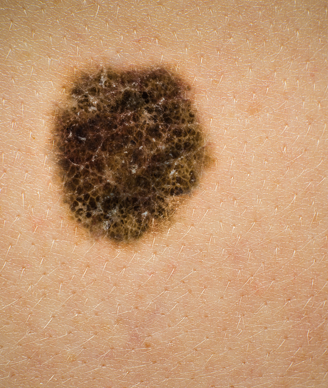Inflammatory Marker Linked With Poor Prognosis in Melanoma
The measurement of levels of C-reactive protein (CRP) in the blood has been found to be an independent prognostic marker for survival in patients with melanoma.
Image © Australis Photography/Shutterstock.com

A new study indicated that the measurement of levels of C-reactive protein (CRP) in the blood has been found to be an independent prognostic marker for survival in patients with melanoma. Patients with the most markedly increased levels of CRP were found to be at high risk for melanoma recurrence and death.
“We believe it is reasonable to include measurement of CRP in prospective investigations of outcomes of patients with melanoma, including in trials of systemic therapy,” wrote Shenying Fang, MD, PhD, of the University of Texas MD Anderson Cancer Center, and colleagues in the Journal of Clinical Oncology. “Furthermore, although these data cannot determine whether interventions to reduce inflammation and/or CRP could benefit selected patients with melanoma, they do suggest that preclinical investigation of such interventions is justified.”
This study is not the first to show a link between levels of CRP and cancer. Prior research has shown an association between CRP and lung and colorectal cancer, and a small study indicated that the marker may be prognostic in patients with early-stage melanoma.
For this analysis, Fang and colleagues examined if CRP in plasma was linked with melanoma stage, recurrence, and survival. They measured CRP in two independent sets of blood samples from 1,144 patients with melanoma, and found that an elevated CRP was associated with poor overall survival and melanoma-specific survival in both the initial set of patients, and in the confirmatory and combined sets (combined: overall survival hazard ratio [HR] = 1.44 per unit increase of CRP, P < .001; melanoma-specific survival HR = 1.51 per unit increase of CRP, P < .001).
The researchers then divided patients into quintiles based on the level of CRP. Patients with the highest quintile had more than four times worse overall survival (HR = 4.14; 95% confidence interval [CI], 2.58–6.64) and five times worse melanoma-specific survival (HR = 5.31; 95% CI, 3.09–9.13) compared with patients in the lowest CRP quintile. They noted that upon multivariable analysis, these associations decreased but remained significant.
When Fang and colleagues compared the patients with a CRP of less than 10 mg/L with those with a CRP of 10 mg/L or more, they found that the higher level was associated with worse overall survival in patients with any stage, stage I/II, or stage III/IV disease, and worse disease-free survival in patients with stage I/II disease.
“Finally, our genetic investigation identified an association between candidate CRP SNPs [single-nucleotide polymorphisms] and melanoma disease susceptibility and progression, suggesting that genetic regulation of CRP could be partly responsible for the association between CRP level and patient outcome,” the researchers wrote, although they acknowledged that these genetic associations must be validated.